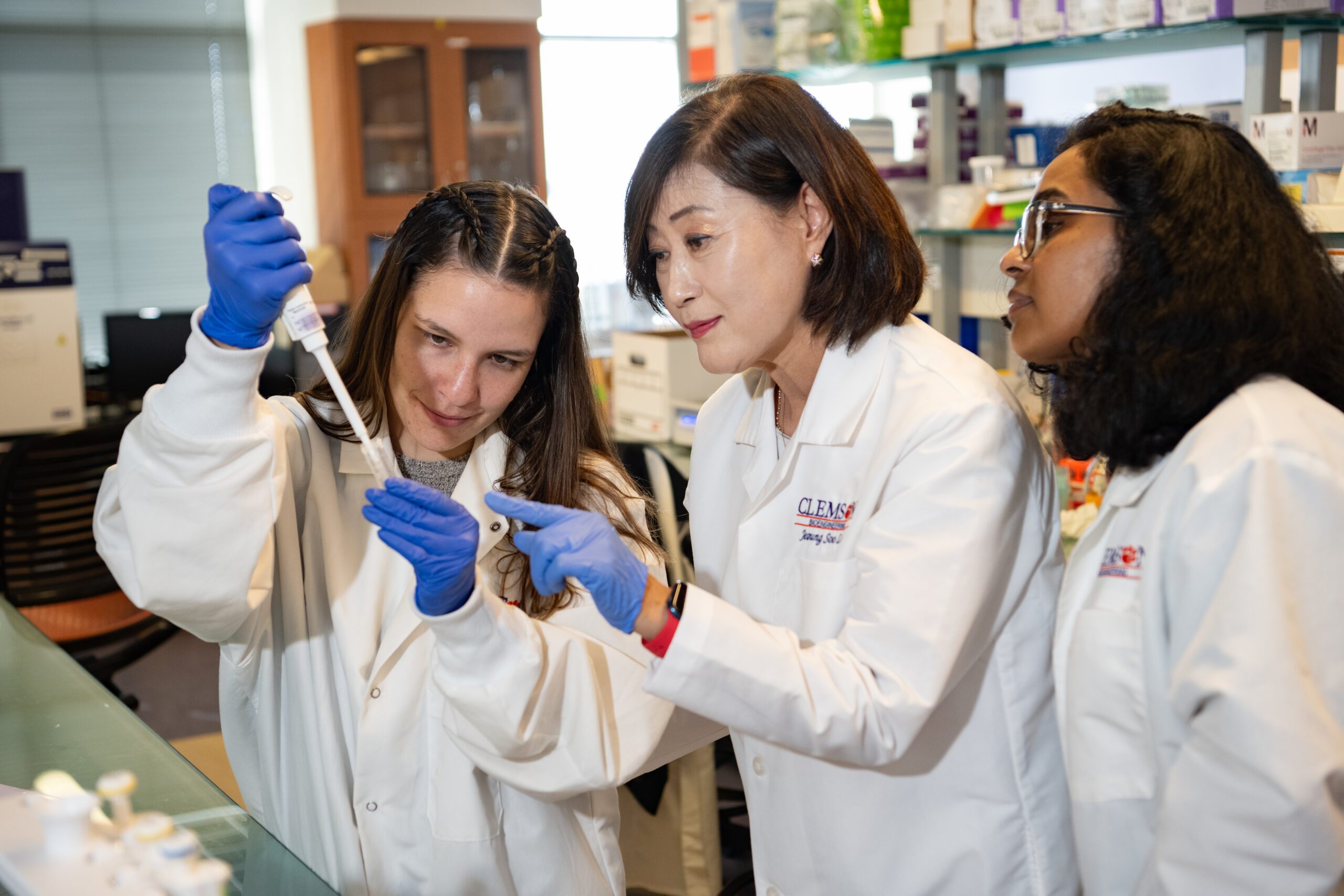
Joe Burgett is working to make South Carolina a leader in nationwide efforts to make bridges safer through drone technology.
Burgett, an assistant professor in the Department of Construction Science and Management, has received grants totaling $94,000 to develop protocols for using small remote-controlled helicopters in bridge inspections.
“We can fly the drone all around the bridge, high and low, and be able to see any deficiencies,” Burgett said.
Burgett, who holds an endowed professorship in the department, is the lead investigator in the project. Other investigators are Dennis Bausman, a construction science and management professor who also holds an endowed faculty chair; and Gurcan Comert, an associate professor at Benedict College in Columbia, South Carolina.
Burgett and Bausman share another distinction. Both have been recognized with one of the highest honors at Clemson University, the Alumni Master Teacher Award: Burgett in 2018, Bausman in 2002.

Burgett and his team are leading a small group of Clemson students who are studying the use of drones not only in bridge inspections but in land surveying as well.
“We can survey hundreds of acres in a few hours,” he said. “Traditionally, that would take weeks.”
The drone project, titled “Viability of Using Unmanned Aircraft Systems In Transportation Infrastructure Asset,” is funded by two grants. The South Carolina Department of Transportation contributed $50,000; while a $44,000 grant was provided by The Center for Connectivity and Multimodal Mobility, an initiative of the Glenn Department of Civil Engineering at Clemson University. The money will be used for equipment and researcher salaries.
“There may be a half dozen states studying drone technology for these purposes, but we’re on the leading edge,” Burgett said.
Inspecting bridges
Drones can reach some parts of a bridge that are difficult for humans to inspect.
“If the bridge is low enough, inspectors can get underneath it and put their hands on it, but a lot of bridges are taller or located over bodies of water,” Burgett said.

Bridges currently are inspected with “snooper trucks” that have a long mechanical arm allowing inspectors to peer under bridges for cracks, rusting joints and other potential problems.
That process is time-consuming and it can create traffic congestion. Plus, bridge inspecting can be a dangerous job.
“You take down a lane of traffic and you’re suspending people over the water,” Burgett said. “The snooper truck is like a carnival ride and it bounces all over the place. It’s not for the faint of heart.”
Bridges are required to be inspected at least once every four years. Some older bridges, however, are inspected more often.
A drone can cut down on labor and costs.
“With a drone, we capture a whole lot of images and we stitch them all together with software, and we can create a 3-D model on our computer,” Burgett said. “Our hope is that we can send this model to the bridge inspectors in Columbia and they can say, ‘Huh, this looks pretty good. Maybe we can wait until next year for the inspection.’”
The project’s primary tool is a small helicopter with four propellers (also known as a quad copter or unmanned aerial system) about 2 feet by 2 feet, and 1.5 feet tall.
Dynamic new field
Using drones for research and commercial purposes is a relatively new but expanding field.
“This world has exploded,” Burgett said. “In August 2016, the skies opened wide for drones. Before that, the FAA rules had not caught up with drones. It was very difficult to fly a drone for commercial purposes. You could do it as a hobby, but if it was for research or commercial purposes, you had to get special authorization. It took months and lots of red tape.”
Burgett cautioned that drones would not completely replace the work of human inspectors, but they could reduce the human workload and speed up the process.








